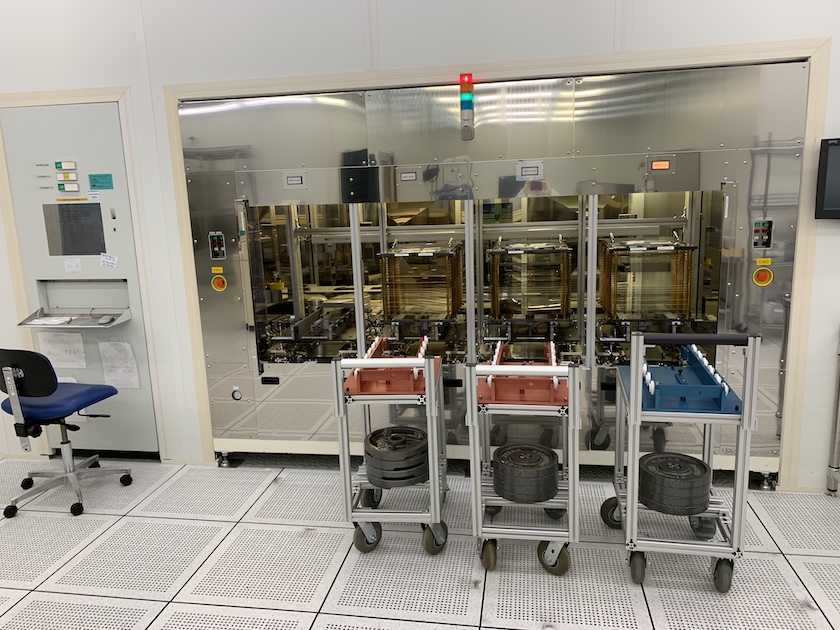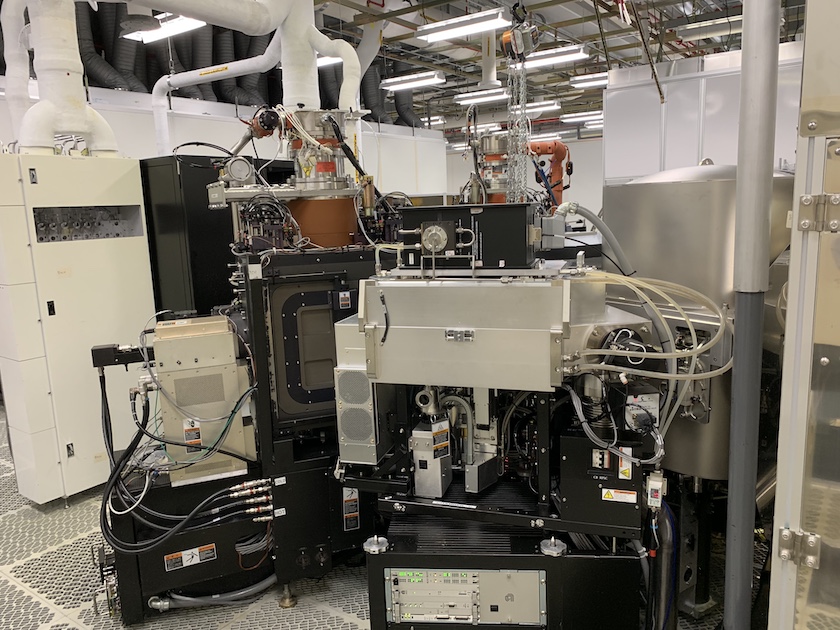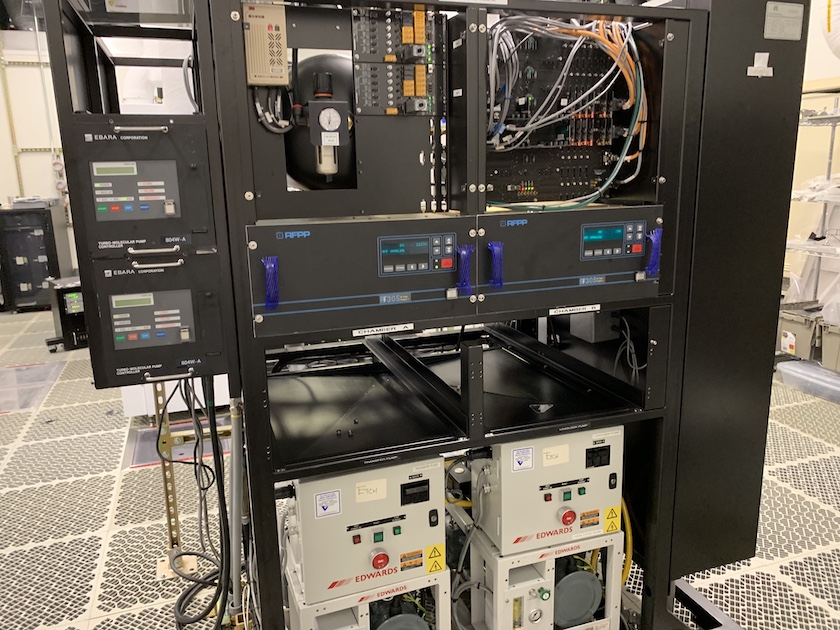The AKT 1600 plasma enhanced chemical vapor deposition (PECVD) system is a powerful vacuum system used to convert reactive gaseous species into a solid film. While the AKT was originally designed to handle substrates up to 370 mm x 470 mm, it can now be fixtured to handle any current solar cell substrates with at least two solar substrates per 370 mm x 470 mm panel. With its advanced capabilities and versatility, the AKT 1600 PECVD system is an essential tool for the fabrication of high-quality solar cells.
________________
The Applied Materials AKT1600 is a panel etcher and panel deposition tool with four loading ports, two vacuum load locks, and five chambers. Two chambers (A and B) are designated for etching, processing a maximum of two panels at a time. Etch Chamber A is used primarily for etching silicon nitrate (SiN). Available gases for Chamber A are triflouromethane (CHF3), helium (He), oxygen (O2), and sulfur hexaflouride (SF6). Etch Chamber B is used to etch aluminum (Al), molybdenum (Mo), indium tin oxide (ITO) and amorphous silicon (a-Si). Available gases are CHF3, He, O2, boron trichloride (BCl3), chlorine (Cl2), hydrochloric acid (HCl) and methane (CH4).
The three deposition chambers are single panel chambers. Chamber D is used to deposit SiN and a-Si. Chamber C is used to deposit material doped n-type and chamber E to deposit materials doped p-type although both chambers can also deposit undoped amorphous silicon. Gases used in Chamber C are nitrogen triflouride (NF3), argon (Ar), silane (SiH4), nitrogen (N2), 1% B2H6/H2, 1% PH3/H2 and hydrogen (H2). Gases used in Chamber D are NF3, Ar, nitrous oxide (N2O), ammonia (NH3), nitrogen (N2), SiH4 and H2. Gases used in Chamber E are NF3, Ar, SiH4, N2, 1% B2H6/H2, 1% PH3/H2 and H2.
Panels are loaded into a cassette, which is then loaded onto the tool ports A, B, C or D and clamped into place. The atmospheric robot picks up a panel and moves it into one of two elevators labeled "Left Load Lock" and "Right Load Lock." There are 12 slots available in each load lock elevator to stage panels for processing. After the load lock is pumped down, the vacuum robot end effector pick the panel out of the elevator slot and move it into the desired chamber for recipe processing.
- Reactive ion etching of various layers and thicknesses of dielectrics and metals
- Plasma enhanced chemical vapor deposition
| Service | ASU rate | Nonprofit/other academic rate | Private/ Industry | Notes |
|---|---|---|---|---|
| Equipment use | $73/hour | $96/hour | Please contact AEPCore@asu.edu |





